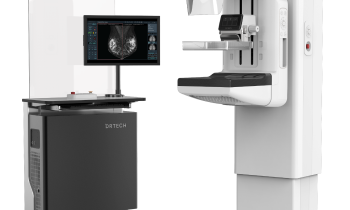News • Research
Covid-19 infection increases risk for preeclampsia
A study found that women who contract Covid-19 during pregnancy are at significantly higher risk of developing pre-eclampsia, the leading cause of maternal and infant death worldwide.
In their study, researchers said their systematic review shows that women with SARS-CoV-2 infection during pregnancy had 62% higher odds of developing preeclampsia than those without the infection during pregnancy. “This association was remarkably consistent across all predefined subgroups. Moreover, SARS-CoV-2 infection during pregnancy was associated with a significant increase in the odds of preeclampsia with severe features, eclampsia and HELLP syndrome,” said Roberto Romero, M.D., DMedSci, chief of the Perinatology Research Branch and professor of Molecular Obstetrics and Genetics at the Wayne State University School of Medicine.
Dr. Romero and Agustin Conde-Agudelo, M.D., M.P.H., Ph.D., adjunct professor of Obstetrics and Gynecology, published their findings after reviewing 28 previous studies that included 790,954 pregnant women, including 15,524 diagnosed with Covid-19 infection. “Both asymptomatic and symptomatic infection significantly increased the risk of preeclampsia,” Dr. Romero said. “Nevertheless, the odds of developing preeclampsia were higher among patients with symptomatic illness than among those with asymptomatic illness.”
Preeclampsia is a sudden increase in blood pressure after the 20th week of pregnancy. Preeclampsia warning signs, in addition to elevated blood pressure, can include headaches, swelling in the face and hands, blurred vision, chest pain and shortness of breath. While the condition can manifest within a few hours, some women report few or no symptoms. The condition is responsible for 76,000 maternal deaths and more than 500,000 infant deaths every year, according to estimates from the Preeclampsia Foundation. It can affect the liver, kidney and brain. Some mothers develop seizures (eclampsia) and suffer intracranial hemorrhage, the main cause of death in those who develop the disorder. Some women develop blindness. The babies of preeclamptic mothers are affected by the condition and may develop intrauterine growth restriction or die in utero.
The earlier the disease starts in pregnancy, the worse the outcome can be for the baby and mother. Women with preeclampsia often do not feel the effects until the condition is severe and becomes life-threatening. Effects on the mother include cardiac problems, possible brain hemorrhage, acute renal failure, blood clotting problems and possible blindness. If left undetected, the condition can progress to eclampsia and the mother may begin convulsing. For the fetus, preeclampsia has been connected to a reduction in placental blood flow, resulting in physical and mental disability, the slowing of fetal development, and in severe cases, infants may be stillborn.
HELLP syndrome is a form of severe preeclampsia that includes hemolysis (the rupturing of red blood cells), elevated liver enzymes and a low platelet count.
While further research is needed to determine the physical mechanisms between Covid-19 infection and preeclampsia, the authors said health care professionals should be aware of the association and closely monitor pregnant women who are infected for early detection of preeclampsia.
Source: Wayne State University School of Medicine
27.09.2021










